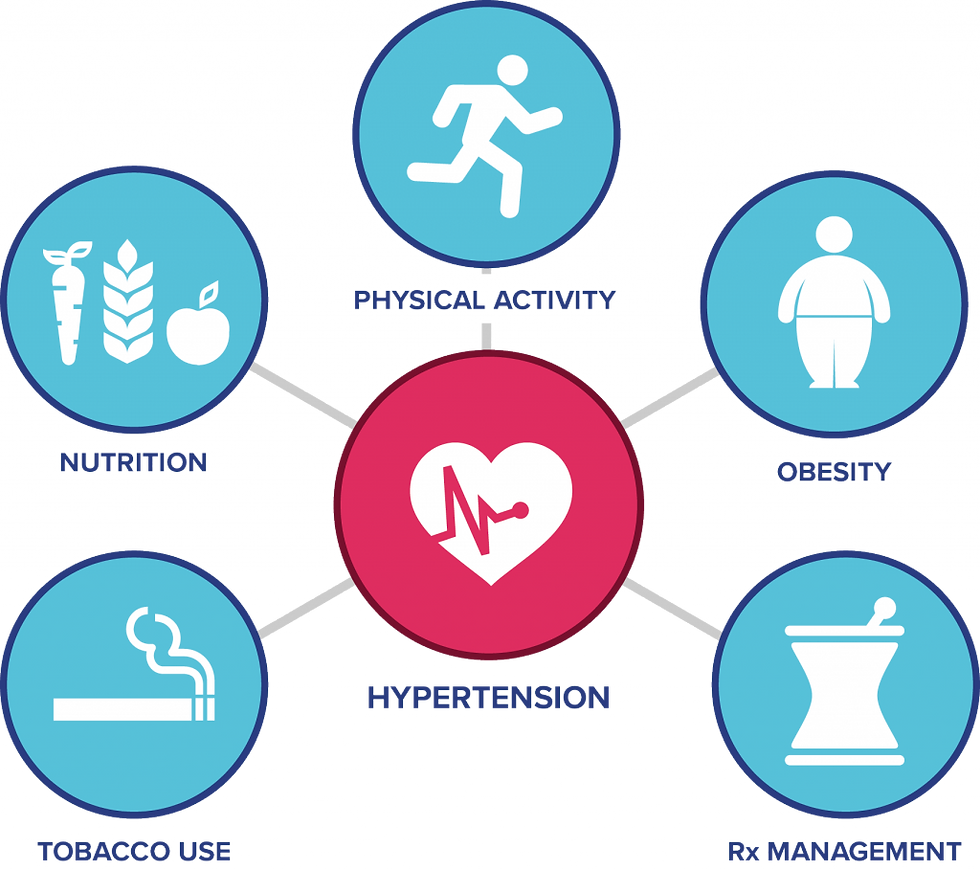Ayurvedic Remedies for Hypertension.
- askyourdiet
- Oct 21, 2017
- 3 min read
Ayurvedic Remedies for Hypertension.
Hypertension is a major health issue worldwide. Hypertension often resides quietly in the body until the point that it begins to cause severe health complications, such as heart attack, stroke and organ failure. Maintaining proper medical care throughout your life is important in preventing the disabling effects of this awful condition. Thankfully, with a holistic approach, hypertension can be controlled. All three doshas can work on reducing stress, and bring mindfulness back into their lives. Getting adequate sleep,
not over exerting yourself with work or stressful situations, participating in activities that bring you joy and happiness along with concentrated mindful meditation are ways in which to begin the healing process and reducing hypertension regardless of dosha type.
Watch the Video
Vata.
Vata hypertension will present itself in irregular patterns of blood pressure and the pulse. Most often associated with nervous disorders, those with Vata hypertension will find they are more prone to anxiety and worry as hypertension peaks. Along with the common activities that all doshas should participate in to reduce hypertension, Vatas will benefit from tonification therapy, which is gentle acupuncture technique that adds strength to the body overall.
Garlic contains a component called allicin. Allicin is believed to have properties that allow it to lower lipids and inhibit blood coagulation. People with Vata hypertension can benefit from consuming raw garlic on a regular basis. The suggested amount to consume is one crushed clove once or twice a week. To make the fresh, crushed garlic easier on the palate, add a little bit of honey and fresh ginger before consuming.
Ashwagandha is also a useful Vata remedies. Preparations of such can be taken alone or in conjunction with other herbs such as Valerian root and Gotu kola. If there is an Ayurvedic practitioner in your area contact them for specific formulas.
Pitta.
Those with Pitta doshas will experience hypertension as heated symptoms. The sufferer may have a face that reddens easily as blood pressure rises. Anger, irritability and sudden outburst are also symptoms on unbalanced Pitta hypertension. Pittas are also at risk of organ failure due to the intense internal heat that the imbalance causes. To regain health, the Pitta dosha must use calming and cooling remedies.
A preparation of Gotu kola should be used. Gotu kola is an herb that promotes circulation and addresses the venous insufficiency associated with increased heat in the body.
Participating in a stronger detoxification of the body through purgation may be necessary to return the Pitta to balance. When purgation is chosen as a remedy for hypertension it should be done using substances that are bitter in nature, such as Senna or Rhubarb Root.
Kapha.
Kapha hypertension is likely to include ailments such as edema, high triglycerides, obesity and blood pressure that remains elevated and is difficult to treat. The watery aspect of Kapha contributes to these conditions.
One herb to approach with caution is licorice. You may hear that licorice can be used as a mild diuretic, which is beneficial to Kapha doshas. However, licorice has also been shown to increase blood pressure in users. If you choose to use licorice, do so only under the careful care of an Ayurvedic practitioner.
Trikatu is an Indian preparation made up of the three pungents. These pungents are black pepper, Indian long pepper and ginger. This formula may help lower LDLs, as well as triglycerides. It also has an anti-inflammatory property. This preparation is beneficial to those suffering from Kapha based hypertension.
Kaphas who suffer from hypertension also need to take special care with their diets. Eat clean, natural foods and eliminate heavy, oily foods as well as dairy during the healing period.








Comments